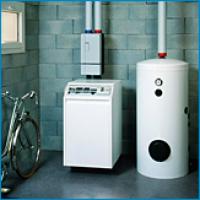Is your basement cold, drafty or damp? Do you have appliances that may be costing you more money than they need to? Would you like to improve your comfort while saving energy and reducing your utility bills? These energy saving tips for your basement just might be the solutions you need to make your basement more cozy and energy efficient.
Reduce Humidity in the Basement
Does your basement smell musty? Is there mold or mildew, condensation on windows, or rotting wood? If there is, you most likely have a humidity problem. Increased humidity can make your space uncomfortable, and cause or aggravate allergies from mildew, mold and mites. The ideal relative humidity level for comfortable and healthy living is between 30 and 50 percent. If your relative humidity level is outside that range, you may experience problems.
If you are experiencing high levels of humidity, check that the vent from your clothes dryer is venting to the outside, and not into your basement. Make sure that the ground outside slopes away from the house and that all downspouts release water at least three feet from the building. If you're still experiencing high humidity, you can use a dehumidifier to remove the excess moisture from the air. Look for one with the ENERGY STAR logo, which uses less energy than standard models and can save you over $200 in energy costs over the life of the unit.
Use this guide for purchasing and using a dehumidifier, and these other ways to reduce moisture in your home.
Old Fridges Suck Energy
Do you have an old fridge running in your basement (or garage)? If you do, it's costing you $90 or more to operate each year. Can you survive without it? If you absolutely need a second fridge, consider getting a new, smaller bar-sized fridge. New fridges are far more energy efficient than those manufactured before 1993. How much is your old refrigerator costing you?
For maximum efficiency, keep your fridge and freezer as full as possible. Unplug the fridge when it's empty and remember to keep the fridge and freezer doors open when the fridge is unplugged.
Old Fridges Suck Energy
Do you have an old fridge running in your basement (or garage)? If you do, it's costing you $90 or more to operate each year. Can you survive without it? If you absolutely need a second fridge, consider getting a new, smaller bar-sized fridge. New fridges are far more energy efficient than those manufactured before 1993. How much is your old refrigerator costing you?
For maximum efficiency, keep your fridge and freezer as full as possible. Unplug the fridge when it's empty and remember to keep the fridge and freezer doors open when the fridge is unplugged.
Energy Efficient Clothes Washing
- Wash your laundry in cold water and save over $40 per year (if you have an electric water heater, and over $30 if you have a gas water heater).
- Depending on the "hardness" of your local water, you may be able to do all your laundry in cold water, using cold water detergent.
- You can save more than 3,400 gallons of water each year by washing only full loads.
- If you need to wash partial loads, reduce the water level accordingly.
- If your washer is over 10 years old, replace it with a new ENERGY STAR qualified model and save $50 - $150 a year on your utility bills. ENERGY STAR qualified models use half as much energy as standard washing machines for cleaning clothes, use less water, and have a better spin cycle so you'll need less drying time.
Clothes Dryer Efficiency Tips
- An easy way to increase the efficiency of your clothes dryer - and save up to $34 each year - is to clean the lint trap before each load.
- Over-drying is a waste of energy and money. It costs up to $34 each year to operate your dryer an extra 15 minutes per load.
- To avoid over-drying your clothes, use your dryer's moisture sensor (if it's equipped with one) to automatically turn off the machine when the clothes are dry. If your dryer doesn't have a moisture sensor, try to estimate the drying time needed based on the size and weight of the load.
- Try to dry loads that are made up of items of similar fabrics. That way all the items will be dry at the same time.
- Dry full loads whenever possible, or reduce the drying time for smaller loads.
Seal Your Basement to Save Energy
A common place for air to escape your home, or for drafts to occur, is around vents, ducts, pipes and electrical wires that lead to the outside. To increase your home's energy efficiency.and lower your energy bills, seal small gaps with caulk, and fill holes up to three inches with spray foam. For gaps or holes larger than three inches, cover with foam board and seal with spray foam. Be sure to seal all areas between the sill plate and the foundation, and in the spaces between rim joists. Basements are a common place for significant air leaks. You can really improve your home's energy efficiency. save money on your energy bills, and help the environment by sealing all the leaks in your basement and the rest of your home.
Useful Energy Efficient Solutions:
- Attic Attic Ventilation, Duct Sealing, Chimney Sealing
- Basement Retire your old refrigerator!, Dehumidifier, Water Heater
- Bathroom Vanity Lights, Light Switch, Vent Fan
- Bedroom Bed-Side Lamp, Light Switch, Room Air Conditioner
- Dining Room Light Fixture, Light Switch, Programmable Thermostat
- Heating and Cooling Systems Table Lamp, Light Switch ...
- Home Office Desk Lamp, Ducts, Electrical Outlets, Power Strip
- HVAC HVAC air conditioning. HVAC Maintenance. HVAC contractor.
- Kitchen Light Fixture, Light Switch, Floor Vents/Radiators
- Living Room Table Lamp, Ceiling Fan with Lighting, Light Switch
- Outside House A/C Unit, Porch Light, Thermal Boundary
- Energy Efficient Windows Replace or Renovate, Energy Efficient Window Treatments
We were unaware of what was involved in an energy audit and your audior took the time to explain everything. We were impressed with the report which told us the areas in which we need to take action on. He never pressured us to use any particular contractors, he just suggested that we go to the Building Energy Pros web site to select contractors of our own choice. He did an excellent job and we HIGHLY recommend the Building Energy Pros. We already have recommended them to several of our neighbors. Again, EXCELLENT JOB!
Cynthia Simpson
The Building Energy Pros auditor was very knowledgeable. I was VERY HAPPY with him. He promptly E-mailed my energy audit report to me and I will consider all of his recommendations.
Tom McGee
We found out that our house really has no energy problems. We are happy to know that we
Leslie Stewart
I was very satisfied with your energy auditor. He was very qualified and spent a great deal of time with me. The energy audit was very informative.
P.B.
The energy auditor was very good and helpful. He keeps in touch with me to answer any of my questions.
D.G.
I was very satisfied with my energy audit. The auditor gave me some tips on attic insulation that were very helpful.
R.G.
I was very satisfied with my energy audit. Thank you!
R.S.
Very good service! I am going to replace the windows as the auditor had suggested.
D.W.
I was very happy with the energy audit. THANKS!
A. M.
My energy audit was very helpful. Joe Dempsey, your auditor, identified some structural problems that I was not aware of and explained to me why I need more insulation.
J. F.
The auditor was EXCELLENT! He spent ALOT of time with me. I am going to take 3 to 4 of his suggestions and correct these small items to save on my energy bills.
M. B.
The auditor did a GREAT JOB! He knew a lot about older homes, which we have. The report was very comprehensive. Thank you!
Vicki Nez/at
Your energy auditor was very nice and helpful. He answered all of our questions. We will recommend Building Energy Pros to our friends and neighbors.
Katherine McCaffrey
The auditor did a TERRIFIC JOB! The report was FANTASTIC! I will make all the repairs he suggested. I will definitely recommend him to everyone I know that could benefit from a home energy audit.
Steve Sleigh, Chevy Chase
The energy auditor was very professional and I am very satisfied with both the energy audit and the report I received. I will be referring the Building Energy Pros.
Tim Clary
I was very satisfied with the auditor. He was great and gave me some very valuable information. I will refer him to people I know who may need a home energy audit.
Willie Gantt
Your home energy audit proved to be very informative and helpful. I was not aware of the updraft created inside our walls because of the balloon framing construction. You said that that can cause heat to be pulled out of the house with the draft going up inside the walls and should be re-mediated. You also said that the attic insulation was insufficient and that fiberglass batts can leave spaces for around the edges causing heat loss and that it should have blown in insulation on top of what was there to seal the whole attic and increase the r factor. After going over your findings and telling me how you would fix the problems you told me how I could do it myself with stuff from the Home Center and for a quarter of the cost. Well, I did. I went into the basement and filled the bottom of the wall joist with unfaced insulation where they set on the sill plate. I then cut one inch foam board the size for each space and set it in and the sealed the edges of that with expanding foam as well as the sill plate to the foundation. I also sealed the sill plate to the foundation where the joist ran along it, as well as the top of those joist where it made contact with the subflooring. Next I went to the home center and rented their blown insulation machine and got ten bales of the insulation. I filled the attic on top of the batt insulation with about six inches giving another r-19 factor on top of the r-19 that was there. You said that the blown in would also help seal the heat loss around the edges of the batt. The work in the basement cost $144.00 and the work in the attic cost $328.00. After the 30% federal energy tax credit it will end up costing me about $330.00, which you said I should recover in savings in the first year. Thank You for all your advice and expertise. You made me aware of things I should consider and did.
Tommy Thompson



